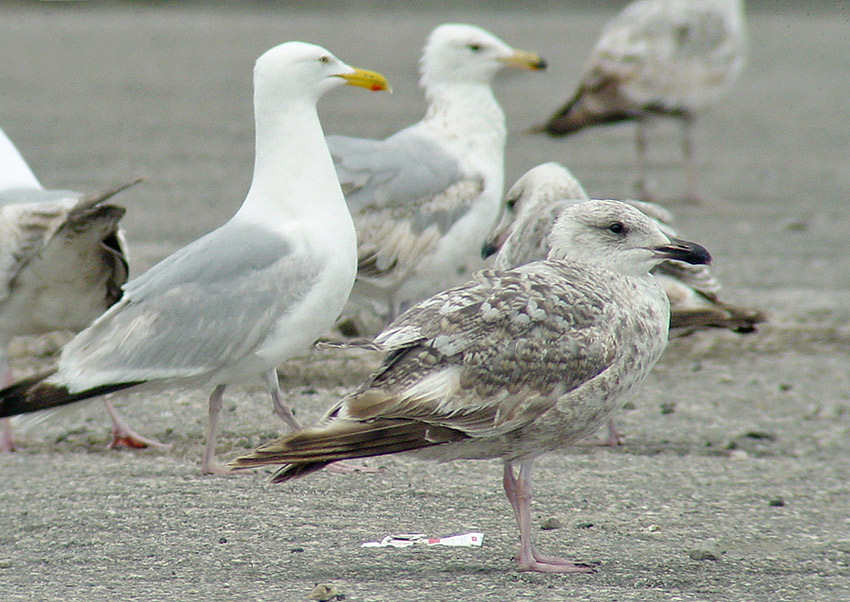 Herring Gull- Zilvermeeuw (argentatus & argenteus)
Herring Gull- Zilvermeeuw (argentatus & argenteus)
(last update:
Herring Gull plumages:
hg 1cy July
hg 1cy August
hg 1cy September
hg 1cy October
hg 1cy November
hg 1cy December
hg 2cy January
hg 2cy February
hg 2cy March
hg 2cy April
hg 2cy May
hg 2cy June
hg 2cy July
hg 2cy August
hg 2cy September
hg 2cy October
hg 2cy November
hg 2cy December
hg 3cy January
hg 3cy February
hg 3cy March
hg 3cy April
hg 3cy May
hg 3cy June
hg 3cy July
hg 3cy August
hg 3cy September
hg 3cy October
hg 3cy November
hg 3cy December
hg sub-ad January
hg sub-ad February
hg sub-ad March
hg sub-ad April
hg sub-ad May
hg sub-ad June
hg sub-ad July
hg sub-ad August
hg sub-ad September
hg sub-ad October
hg sub-ad November
hg sub-ad December
hg ad January
hg ad February
hg ad March
hg ad April
hg ad May
hg ad June
hg ad July
hg ad August
hg ad September
hg ad October
hg ad November
hg ad December
|
Herring Gull 5.365.285 2cy (argenteus), June 14 2002, Boulogne/Mer, France (50.43N-01.37E). A 2cy argenteus, ringed as pullus on June 30 2001 at Borselle-Kaloot, the Netherlands (51.26, 03.43), ring number Arnhem 5.365.285. From April onwards, argenteus has a complete moult during summer to so-called "second winter" plumage. This complete moult will be finished by October. The head appears white from May to July and will be moulted by July-August; it will show neat fine streaking by October. The under-parts and rump turn pale, mottled with brown. From mid-April, the scapulars and mantle are replaced by third generation feathers, starting with the replacement of the lower upper scapulars. The pattern of the third generation scapulars is more or less similar to the anchor pattern of the second generation feathers, but they can be recognized by the warm buffish tone and neat white fringe as long as the feathers are fresh. In the second generation scapulars, the fringes are often worn away (especially in the upper scapulars). In argenteus, some new scapulars may appear adult-like pale grey, but most new feathers will show an anchor pattern and this still applies on the new feathers in September. The inner primaries are shed from April and new second generation primaries grown in. The last juvenile primary (P10) will be shed by the first week of August. The majority of argenteus complete the primary moult by the first week of October, with a new second generation P10 fully grown. The new primaries are dark with a tiny pale tip on the fresh flight-feathers. Again, the four inner primaries show an extensive pale window, as both inner and outer-web are pale greyish white-brown, contrasting with the outer-wing. A pale inner-web can still be found in P7. The primary moult score of 5.35x.285: P6 is missing and P7 is still juvenile. The rectrices are still juvenile. Tertails #1-2 are replaced for second generation feathers showing dense barring; tertails #3-4 are growing. The two inner greater coverts have been moulted, #4-10 are still juvenile and the visible outer greater coverts have been dropped. In the median coverts, there are no juvenile feathers left but the mix of feathers of uneven length make the moult strategy in the medians hard to ascertain: median coverts #4-5 are missing and #11 is very short. The outer lower lesser coverts from #12 outwards are missing and #4 is missing as well. Five lesser coverts have been replaced and about 10% is still juvenile, especially the carpal edge. Most of the lesser coverts are missing.
|
